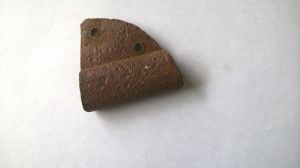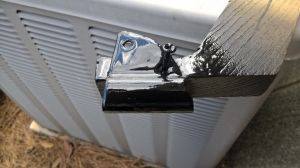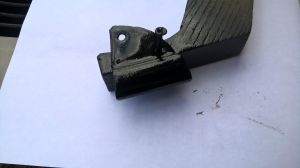- Home
- About Us
- Join/Renew
- Member Benefits
- Member Pages
- Log In
- Help
- Museum Store
Is there a good source for the hood lower corner rubber pads for my 1930 Model B? Steele and Restoration Supply don’t have them. My plan B wouldn’t be period correct. Jim
I’m also trying to solve the problem Jim is having with hood corners. The large lip at the bottom of the hood prevents a nice fit with the generic rubber ones. Perhaps leather could be soaked and formed over the lip to look right? Any suggestions would be helpful. Tom
I’ve been working with some heavy leather to try to figure out a way to make it work. I’ll continue my research and testing and let everyone know if I can figure it out.
I seem to remember the original Pierce hood corners were actually metal, shaped to fit, then covered in leather. This is from one of the cars I’ve owned, but I don’t have proof of that.
David, I appreciate that work! Robert
I am working on a couple of rubber projects. I went over and got a hood corner off my ’33 836

I wire brushed it because I am 8 months away from my new house with a glass bead cabinet.

I went out and got a can of Performix Plasti Dip which says it is a multipurpose rubber coating. I sprayed the pitted part just to see how well it would cover. You can put multiple coating 30 min apart.

Here it is after multiple coats. I would probably fill the pits I had before coating the next one.

AHA! I thought there was a metal base. I have a metal worker who could make these, but I think they’d be expensive, I’ll talk to him.
It needs a pretty heavy coating, since the purpose is not to scratch!!
Thanks…
After you smooth the metal a bit, you might want to use safety wire (either waxed with a non-silicone wax or with a thin film of wheel bearing grease) and dip it directly in the Plasti Dip. There will be a drip, but you can control where it goes. The wood will cause a flat spot and also cause you to have to cut the Plasti Dip away from the stick. It’s like the old fashioned candle making process.
I am working on the old trick of a solution of Molasses and water as a rust remover. Procedure and pictures of the louvered grill on my ’29 to follow in a week or so. Should be a real fly catcher!
William,
You might want to look at the vibratory tumblers from Eaastwood. The little one has an issue with the hold down assembly for the top (it vibrates loose over time, epoxy it back together), but it works great on rare parts. I use either walnut shells or glass beads, and let it work for a day or so. Put it somewhere away from the edge of the workbench… It cleans the special bolts for almost anything, including the chrome acorn nuts and other chrome bolts on the Pierce. Even brass looks shiny after a day or so as long as the parts are reasonably grease free to start.
Bob,
Thanks for the info. How long do you run the vibratory cleaner?
Bill
Bill,
Does that piece wrap around the corner completely or just cover the face and the bottom? Jim
Jim,
It is a wrap around.

Now the question would be, is the bottom lip of the hood the SAME on, let’s say, all 1929-1938 cars? Or, are there different cross sections. I could make a drawing of the piece need for a ’31 Model 43, but what other models would that fit?
And, of course, there’d be four distinct pieces, as they’re all different.
Bill,
I am an engineer, so forgive me. The answer is: it depends. The more tarnished, the longer it will take. Brass, chrome and copper take less time in walnut shells than steel. You just have to experiment, and determine how smooth and bright you want. I would start with overnight and play with it. In reality, 24 hours is a good call for most items.
Bob
Bob,
I hold no animus towards engineers and I do appreciate your input. I will try the 24 hrs and see how it goes. You gave me what I needed. I didn’t know if it would take minutes, hours, days or weeks.
Thanks
Bill
Bob, don’t apologize for being an Engrinear, I are one two.
In my family, I’ve never lived down trying to get our 2 year old grandchild to move by telling her to “turn ninety degrees””….”
Plus he is a Virginian, I guess you both are.
